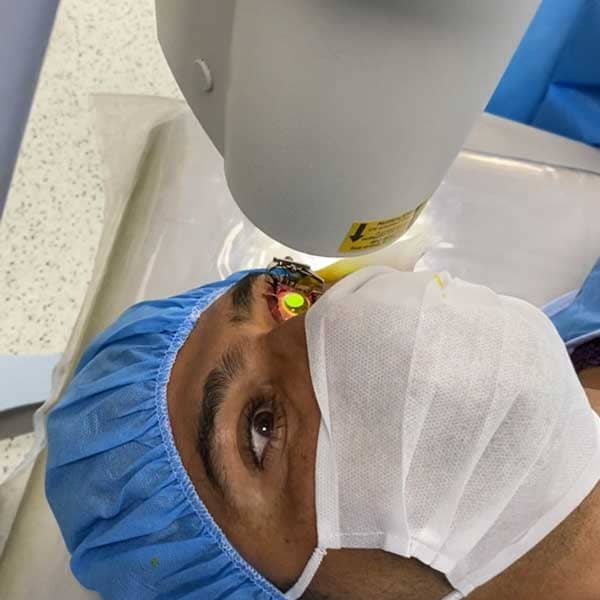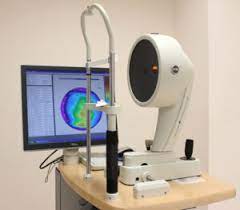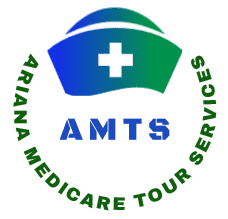Keratoconus is an eye condition that causes gradual thinning and protrusion of the cornea, leading to distorted vision. In Iran, we offer advanced techniques for treating this condition using ultraviolet light, known as CCL, CXL, or C3R techniques, available in the cities of Shiraz, Tehran, Mashhad and Yazd. These treatments aim to promote corneal stability and improve vision by strengthening the collagen bonds within the cornea to prevent progression of the disease. Discover our treatment options and take advantage of the latest technology to achieve optimal results in your eye care

Contents of the article
- Introduction.
- How it works.
- How to perform the procedure (C3R) or (CCL) to treat keratoconus in our clinic in Shiraz, Iran.
- For which patients is C3R or CCL therapy beneficial?
- Is using this surgical method definitely beneficial and effective?
- How long does the C3R/CXL/CCL procedure take to treat keratoconus in Iran, Shiraz?
- Common and possible complications after CCL/C3R surgery.
- The best doctors and doctors for treating keratoconus in Iran in the cities of Shiraz and Tehran.
- Reference.
1. Introduction
Cross-linking of collagen with riboflavin C3R is a new therapeutic method that increases stiffness by increasing cross-links. This method has proven effective in porcine and human corneas, and has been used to treat keratoconus, depleted collagen after corneal wounds, and ectasia after LASIK surgery.
2. How it works:
Riboflavin or Vitamin B2 acts as a photosynthetic mediator and absorbs UV radiation at 370 nm. The free radicals generated cause a change in the amino group in the amino acid of collagen. These changes increase the covalent bond between corneal collagens, thereby increasing the thickness of the collagen tissue and the tensile strength of the cornea.
The ultimate crosslinking effect of 370 nm ultraviolet light reaches 300 microns at the cornea.
3. How to perform the operation (C3R) or (CCL) to treat keratoconus in our clinic:

The main goal is to ensure the penetration of riboflavin into the cornea. Because the riboflavin molecule is large, it is difficult to penetrate through the corneal epithelium, so it must either be removed or the connection between the cells broken by means such as the use of tetracaine, preferably both. It is recommended to use riboflavin drops every 2 minutes for 30 minutes. Although with fewer times, with eyes closed and the patient in the bow position, it still has enough absorption. To confirm absorption, the patient is examined with a slit lamp to confirm yellowing of the cornea and the presence of riboflavin in the anterior chamber. To prevent endothelial damage, the thickness of the cornea used with riboflavin and dextran should be more than 400 microns. In thin corneas, riboflavin without dextran is used. This solution is hypotonic, and after it is absorbed by the cornea, it becomes thicker. Before starting ultraviolet radiation, the thickness of the cornea is checked using a keratometer until it reaches 400 microns. An ophthalmoscope is placed and local anesthesia is used intermittently. Next, the UV rays are irradiated with a special device calibrated using ultraviolet light with a length of 370 nm and a brightness of 3 W/cm2. A contact lens is placed on the eye to bandage it, and after ensuring that it is placed correctly, a drop of ciprofloxacin is poured into the eye. The patient drops ciprofloxacin every 6 hours and returns 24 to 48 hours later to have the lens removed. In the first few days, darkening can be seen on the surface, which will resolve within a few weeks.
4. For which patients is crosslinking (CCL/CXL) beneficial?

This procedure is usually recommended for patients whose corneal examination shows worsening keratoconus. In order for the results of the corneal examination to be accurate, please do not use contact lenses before the examination (hard lenses should not be used two weeks before and soft lenses should not be used one week before the examination). If your vision is such that you can’t go that long without using lenses, there is a treatment for you. In such a case, since the cornea is not very thin, the surgeon can suggest a specific treatment method by estimating the progression of keratoconus. In these cases, the most important factor in choosing a treatment method is “the person’s age.” Because due to the natural bonds of the cornea, as you get older (from 30 years onwards), the amount of corneal hump usually stabilizes and does not get worse. Therefore, in older patients, cross-linking (CXL) usually does not seem necessary (except in special circumstances – the diagnosis of which is the responsibility of the specialist).
5. Is using this surgical method definitely useful and effective?
The only treatment currently available to prevent worsening of keratoconus is collagen cross-linking.
Evidence obtained from three clinics (randomly selected) and patients examined one year after the operation shows that cross-linking (CCL/CXL) is effective in inhibiting the progression of keratoconus, and in more than 90% of cases it is successful and the shape of the cornea is corrected. Patients in more than 45% of cases. In long-term studies that examined patients for 5 years after the procedure, the success rate of the procedure in preventing the progression of keratoconus was equally noted.
6. How long does the CCL/CXL/C3R procedure take to treat keratoconus in Iran, Shiraz?
It is one of those surgical operations that is performed without entering the hospital and under the supervision of the most skilled ophthalmologist in our hospitals in the city of Shiraz. Although the duration of the operation is only 30 minutes, it is necessary for the patient to be in the hospital for some time before the operation. After the operation is completed, the patient must stay in the center for a while to check on his condition. After ensuring that the patient’s condition is stable, he is discharged from the hospital. This way, the total time before, during and after the procedure is about half a day. So be prepared to spend this time in the hospital.
7. Common and possible complications after CCL or C3R surgery

In the first few days after the operation, there may be some of the following complications:
- Blurred vision in a few days.
- Tears, irritation, and eye redness for a few days to a month.
- Three days after surgery, a person can do routine activities such as studying, driving, etc.
8. The best doctor for treating keratoconus in Iran
Our health is a priority, so we always look for the best, and if you are suffering from searching for a doctor to treat keratoconus or LASIK surgeries, or the best eye doctor in Iran, to get the best effective results, we advise you to visit Dr. Vahid Ghasemi Fard, a consultant for corneal and femto-LASIK surgeries, and an expert in treating many cases. Corneal transplantation, lens implantation, treatment of keratoconus disease, and laser vision correction operations in many hospitals in Iran in the cities of Shiraz and Tehran, such as Al-Basir Hospital, Al-Noor Hospital, and the Dr. himself’s clinic, are the leaders in this field.
9. Reference:
Read more about other articles in the medical fields (Cosmetics and Medical).
- Hair Transplantation in Iran
- Rhinoplasty (Nose Job in Iran)
- Face Lift Surgery (Rhytidectomy) in Iran
- Breast Lift in Iran
- Chin Surgery in Iran
- Liposuction in Iran
- Tummy Tuck (Abdominoplasty) in Iran
- Butt Augmentation (Brazilian butt lift)
- Breast Augmentation in Iran
- Eye Care in Iran
- Cataract Surgery in Iran
- Diabetic Retinopathy Treatment in Iran
- Heart Surgery in Iran
- Knee Replacement in Iran
- Eyelid Surgery in Iran
- Safe Abortion in Iran
- Fertility Treatment in Iran


